Results 7,991 to 8,000 of 12096
Thread: Anandtech News
-
03-29-18, 03:13 PM #7991
Anandtech: The Intel NUC8i7HVK (Hades Canyon) Review: Kaby Lake-G Benchmarked
Intel has enjoyed great success with its NUC line of ultra-compact and small form-factor (UCFF & SFF) PCs. While the UCFF form-factor managed to provide enough horsepower for office tasks and other similar use-cases, the gaming market was not addressed. With the emergence of PC gaming as a growth driver, Intel took steps to expand the capabilities of the NUC lineup by creating the NUC6i7KYK (Skull Canyon) with a slightly larger form factor. It came with a high-end integrated GPU that provided consumers with a bit more gaming leeway compared to other NUCs. Back at the 2018 CES, Intel launched its successors - the NUC8i7HVK and NUC8i7HNK (Hades Canyon). They are the the first desktop PCs to make use of Kaby Lake-G with a Radeon GPU and HBM2 memory in the same package as the processor. Intel provided us with a sample of the high-end Hades Canyon NUC to put through our rigorous benchmarking and evaluation routines. Read on to get an idea of the performance of the PC and the market segments that it can fit in.
More...
-
03-30-18, 08:56 AM #7992
Anandtech: PowerColor Launches Red Dragon RX Vega 56: Lays Groundwork for Mini-ITX Ra
PowerColor has released its new graphics adapter based on AMD’s Radeon RX Vega 56 GPU and paired with its own custom PCB. The new Red Dragon RX Vega 56 is based on a rather tiny PCB that it would fit easily into Mini-ITX builds, but ships with a massive triple-fan cooling system that only fits into enthusiast-class PC cases.
PowerColor says that the Red Dragon RX Vega 56 (AXRX VEGA 56 8GBHBM2-2D2HD/OC) video card was designed to make the cost of the board lower without sacrificing performance or reliability. Unlike its Red Devil RX Vega 56 and Red Devil RX 64 brothers, the Red Dragon RX Vega 56 comes on a short PCB and does not offer factory overclocking. Meanwhile, just like more advanced boards, the new graphics card has a BIOS switch for flipping between different performance modes (silent & overclocking). Furthermore, the card has one 8-pin and one 6-pin auxiliary PCIe power connectors, which should be enough even for those who plan to run it at higher frequencies. As for connectivity, the Red Dragon RX Vega 56 has two DisplayPort 1.4 and two HDMI 2.0b outputs.
The Red Dragon RX Vega 56 comes with a large cooling system featuring a copper base, multiple thick heat pipes and three fans. The cooler is two slots wide and 316 mm long, which makes dimensions of the whole construction similar to other graphics adapters based on the Radeon RX Vega. Meanwhile, since the card relies on a short PCB, this potentially opens the door to some aftermarket options; in particular switching out to something more compact (say, a hybrid LCS) in a bid to fit the board into an SFF PC. Obviously, this is something that PowerColor does not recommend doing, but if you want to have a Mini-ITX gaming PC with a Radeon RX Vega inside, buying a custom graphics card and then switching its cooler is the only way to build such a system at present.
The short PCB is probably a bit simpler and cheaper than the long one used for the Red Devil RX Vega boards, which gives the manufacturer some additional flexibility when it comes to pricing of the product. Meanwhile, the shorter and simpler PCB does not necessarily mean that the new graphics adapter has compromises. AMD’s reference design for the Radeon RX Vega uses a 6+1 phase VRM based on the International Rectifier IR35217 power controller with six IR 3598 phase doublers for the GPU power circuity to maximize efficiency. The Red Devil Radeon RX graphics cards use exactly the same VRM as reference cards do, but while it is unclear what is under the hood of the Red Dragon RX Vega 56, it is unlikely that PowerColor sacrificed efficiency for a bit lower BOM cost on a high end product (i.e., the VRM is good enough and it is unlikely that the GPU VRM has less than six phases).Specifications of PowerColor and Reference Radeon RX Vega Cards PowerColor Red Devil Radeon RX Vega 64 PowerColor Red Devil Radeon RX Vega 56 PowerColor
Red Dragon Radeon RX
Vega 56AMD
Radeon RX Vega 64AMD
Radeon RX Vega 56Stream Processors 4096 3584 4096 3584 Base Clock 1417 MHz 1308 MHz 1177 MHz 1406 MHz (LCS) 1156 MHz 1247 MHz (Air) Boost Clock 1607 MHz 1526 MHz 1478 MHz 1677 MHz
(LCS)1471 MHz 1546 MHz (Air) VRAM Transfer Rate 1.89 GT/s 1.6 GT/s 1.89 GT/s 1.6 GT/s Capacity 8 GB Bus Width 2048-bit Type HBM2 Board Power unknown 345W (LCS)
295W (Air)210W Dimensions 316 × 150 × 55 mm 316×150×40 mm 272 × 112 × 40 mm Power Connectors 2 × 8-pin 1 × 6-pin
1 × 8-pin2 × 8-pin Outputs 2 x HDMI 2.0
2 x DP 1.41 x HDMI 2.0
3 x DP 1.4Launch Price unknown $699 (LCS)
$499 (Air)$399
PowerColor says that the Red Dragon RX Vega 56 will be available shortly. When it comes to pricing, the Red Dragon sits below the Red Devil lineup, so expect the new card to cost less than the higher-end products from PowerColor powered by the same GPU.
Buy PowerColor Red Devil Radeon RX Vega 56 on Amazon.com
Related Reading:
- PowerColor Announces Red Devil Radeon RX Vega 64 and 56
- XFX to Release Custom Radeon RX Vega 56 and Radeon RX Vega 64 Double Edition Cards
- Radeon RX Vega Unveiled: AMD Announces $499 RX Vega 64 & $399 RX Vega 56, Launching August 14th
- The AMD Radeon RX Vega 64 & RX Vega 56 Review: Vega Burning Bright
More...
-
03-30-18, 10:09 AM #7993
Anandtech: Alliance for Open Media Releases Royalty-Free AV1 1.0 Codec Spec
Eagerly awaited across the tech industry, this week the Alliance for Open Media (AOMedia) has published the first complete version of the bitstream and decoding process specification for their royalty-free AV1 video codec. The release of the AV1 1.0 spec will enable backers of AOMedia to add support for the technology to their products or services, including taking the all-important step of finalizing the designs for the low-power hardware decoders critical for driving the codec's adoption. At least initially, AV1 will be used primarily for streaming video and user-generated content as an alternative to HEVC and its ongoing royalty disputes, but eventually adoption of AV1 may expand to other applications.
The AV1 open-source video codec was developed with 4K+ ultra-high-def resolutions, HDR, and wide color gamut in mind. Among the key features the new codec, AOMedia mentions a 30% more efficient compression algorithm compared to existing methods, predictable requirements for computational capabilities of hardware, and maximum flexibility and scalability. The backers of the AV1 want the codec to be ubiquitous across devices and platforms, therefore expect it to be supported not only by major chipmakers, software designers, and service providers, but also by leading makers of consumer electronics.
AOMedia does not disclose key technological peculiarities of the AV1 video codec in a short whitepaper form, meanwhile parsing through a 600-page bitstream and decoding spec for developers does not necessarily help to explain all the peculiarities of the tech in general. Therefore, I am going to limit technical details about the AV1 to a necessary minimum here.
On a high level, the AV1 is conceptually similar to existing codecs, such as H.264 or H.265. AV1 uses the same basic elements as various codecs have used for well over a decade: block-based coding, variable block sizes (up to 128x128 pixels), block motion compensation, intra-frame compression, forward-integer transform and so on. Meanwhile, since we are talking about compression algorithms more efficient than existing ones, it is natural that the AV1 has a number of advantages over contemporary codecs.
The AV1 performs internal processing in 8, 10 or 12 bits per sample precision, it also supports all three widespread types of chroma subsampling (4:2:0, 4:2:2, 4:4:4), and virtually all major color gamuts and formats (sRGB, BT.2020 (both 10-bit and 12-bit), BT.2100, etc.). The BT.2020 and the BT.2100 recommendations include support not only for 3840×2160, but also for 7680×4320 (8K) resolution, so the AV1 is technically ready for the next-gen monitors and TVs.
Speaking of displays, it is necessary to note that the AV1 was designed to be compatible with existing interconnections, such as DisplayPort, eDP, HDMI and so on. That said, the technology should also be compatible with contemporary content protection technologies.AV1 Profiles seq_profile Bit Depth sRGB Gamut Support Chroma Subsampling 0 8 or 10 No YUV 4:2:0 1 8 or 10 Yes YUV 4:4:4 2 8 or 10 No YUV 4:2:2 2 12 Yes YUV 4:2:0
YUV 4:2:2
YUV 4:4:4
The publication of the AV1 spec 1.0 is merely the first step towards adoption of the technology by the market. AOMedia expects content creation tools and desktop browsers to begin to roll out support for AV1 later this year. To ensure this, AOMedia released an unoptimized/experimental AV1 software decoder and encoder for use in software applications. Then, sometimes in 2019, the consortium anticipates select chips and programs to support the tech. More widespread support of the AV1 along with adoption by software is projected for 2020.
Speaking of adoption, the list of AOMedia members includes a variety of influential companies, including Apple, Amazon, AMD, Arm, Broadcom, Facebook, Google, Hulu, Intel, IBM, Microsoft, Netflix, NVIDIA, Realtek, Sigma and many others. These companies either control huge ecosystems themselves, or develop chips that are used by hundreds of millions of customers worldwide. Their support will ensure widespread adoption of the AV1 in the next decade. In the meantime, AOMedia has already started R&D for the AV2, which is to succeed the AV1 codec.
Gallery: AV1 Presentation





Related Reading:
- HEVC and the Windows 10 Fall Creators Update
- Intel Teases Mobile Kaby Lake: HEVC Main10 Profile Support, Coming This Autumn
- ARM Announces Mali Egil Video Processor: VP9 Encode & Decode For Mobile
- Future-proofing HTPCs for the 4K Era: HDMI, HDCP and HEVC
More...
-
03-30-18, 12:18 PM #7994
Anandtech: Sony Cuts Price of PlayStation VR Headset to $299
As the VR headset market continues to grow and mature alongside initiatives like Daydream and Windows Mixed Reality, hardware makers have been able to drive down costs over time. Over the past few months, we've seen Facebook’s Oculus VR and HTC’s Vive dropping MSRPs of their first-gen hardware. Now, it is Sony’s turn to take $100/€100 off its headset.
Starting this week, Sony’s PlayStation VR headset (PSVR-CUH-ZVR2) now costs $299/€299, down from the previous price of $399/€399. In addition to reducing the price of the headset itself, Sony has cut the MSRPs of their PlayStation VR bundles as well, to the point that (at least for the moment) there's little reason to buy anything besides a bundle in the US. The PlayStation Doom VFR bundle is now available the same $299 price point as the standalone headset, whereas the PlayStation VR The Elder Scrolls V: Skyrim VR bundle runs for a bit more at $349.99. In Europe, Sony offers the PlayStation VR Starter Pack with PlayStation VR Worlds title for €299. Keep in mind that contemporary PS VR bundles include Sony’s PlayStation Camera that is used for position tracking.
The Sony PlayStation VR head-mounted display (HMD) features a 5.7” OLED display with 1920×1080 (960×1080 per eye) resolution, 90 Hz – 120 Hz refresh rate and approximately 100° field of view. The original competitors for PS VR — the HTC Vive and the Oculus Rift — offer a higher resolution (2160×1200, 1080×1200 per eye), but a lower maximum refresh rate. Considering the fact that PS VR has to work with the original PlayStation 4, the somewhat limited resolution is justified by the iGPU of the console.
Sony’s PlayStation VR was the most reasonably priced tethered VR platform introduced in 2016, albeit, at the cost of lower resolution and compatibility only with the PlayStation 4/PlayStation 4 Pro consoles. With the price cut, PS VR retains its affordability leadership: when purchased alongside a PS4, the package will cost $600, whereas a PS4 Pro-powered VR set will cost $700.
Buy PlayStation VR - Doom Bundle on Amazon.com
Related Reading:
- Sony to Start Selling PlayStation VR in October for $399
- HTC Vive Pro HMD Pre-orders Start Today for $799; Vive Reduced to $499
- Oculus Announces Six Week Sale of $399 Rift + Touch Bundle
- HTC Offers Vive + GeForce GTX 1070 + Fallout 4 VR Bundle for $799
More...
-
03-30-18, 01:39 PM #7995
Anandtech: Mushkin Launches Source SSDs: 3D TLC NAND, SATA, from $39 to $110
Mushkin has announced its new family of affordable SSDs primarily aimed at users who would like to upgrade their PCs featuring HDDs. The company’s Source drives use inexpensive 3D TLC NAND memory as well as a proven controller from Silicon Motion, allowing the company to start pricing at $39.
Mushkin’s Source family of SSDs includes three models featuring 120 GB, 250 GB, and 500 GB capacities. Mushkin says that 1 TB model will be included into the lineup at a later date, but does not elaborate. The drives come in a 2.5-inch/7mm form-factor and use a SATA interface, making them straightforward upgrades for existing desktops and mainstream laptops that use DFF storage devices. Muskin also plans to ship a M.2-2280 version of the Source family for ultra-thin notebooks sometimes in April. Mushkin’s Source drives are based on Silicon Motion’s SM2258XT controllers and 3D TLC NAND from an unnamed supplier, a combination that is frequently used by various SSD makers for their entry-level models these days.
On paper, the performance of Mushkin’s Source drives is comparable to other inexpensive SATA SSDs: up to 560 MB/s sequential write speed and up to 520 MB/s sequential write speed. As for random speeds, the manufacturer declares up to 75K 4K read IOPS as well as up to 81K write IOPS, which is somewhat lower than what we've seen in other 3D TLC-powered devices. Keep in mind that low-capacity SSDs usually perform slower than their higher-capacity counterparts, so for exact numbers check out the table below.
The Source family of SSDs from Mushkin is the company’s fourth series of drives based on various types of 3D TLC NAND and Silicon Motion’s SM2258/SM2258XT controllers. Mushkin’s lineup already includes Triactor 3D, 3DL, and 3DX products, featuring capacity points ranging between 80 GB and 2 TB. It is noteworthy that based on the numbers from Mushkin’s product catalogue, its Triactor-series drives are faster when compared to the Source drives, but real-world performance of such SSDs isn't likely to be dramatically different.Mushkin Source Specifications Capacity 120 GB 250 GB 500 GB 1 TB Model Number MKNSSDSR120GB MKNSSDSR250GB MKNSSDSR500GB ? Controller Silicon Motion SM2258XT NAND Flash 3D TLC NAND Sequential Read 510 MB/s 560 MB/s ? Sequential Write 440 MB/s 515 MB/s 520 MB/s ? Random Read IOPS Up to 29K IOPS Up to 54K IOPS Up to 75K IOPS ? Random Write IOPS Up to 79K IOPS Up to 81K IOPS Up to 81K IOPS ? Pseudo-SLC Caching Supported DRAM Buffer Yes, capacity unknown TCG Opal Encryption No Power Management DevSleep Warranty 3 years MTBF 1,500,000 hours MSRP $39 $63 $110 ?
All Mushkin Source SSDs are rated for 1.5 million hours MTBF and come with a three-year limited warranty. The drives are available now in the U.S.: the cheapest 120 GB version is priced at $39, the 250 GB flavor costs $63, whereas the 500 GB SKU is sold for $110. Keeping in mind that formally the Source family of SSDs are Mushkin’s lowest-end drives, expect their pricing to be very flexible.
Buy Mushkin Source SSD 500 GB on Amazon.com
Related Reading:
- Mushkin Launches Reactor Armor 3D and Triactor 3D 2TB SATA SSDs: 3D NAND, SM2258
- Mushkin Unveils New Pilot & Helix-L M.2 SSDs at CES 2018: Up to 3.5 GB/s, Up to 2 TB
- The Plextor M8V SATA SSD Review: Toshiba 3D TLC In a Mainstream Drive
More...
-
04-02-18, 10:21 AM #7996
Anandtech: Pioneer’s APS-XS02 USB-C 3.1 Gen 2 External SSDs Now Available
First formally introduced earlier this year, Pioneer has begun selling their APS-XS02 external SSDs, the company's first USB Type-C SSD. The drives combine stylish design with decent performance, compatibility with various PCs, and reasonable pricing.
The Pioneer APS-XS02 portable bus-powered SSDs come in small and light enclosures measuring 65×45×10.5 mm and resembling Zippo lighters. The drives feature 120 GB or 240 GB capacities and are rated for up to 480 MB/s sequential read speed as well as up to 400 MB/s sequential write speed, faster than any USB flash drives. The manufacturer does not disclose which controller and what kind of memory it uses with the APS-XS02, but since we are dealing with a 2018 product, it is reasonable to expect something contemporary.
One of the key features of the Pioneer APS-XS02 SSDs is their USB 3.1 Gen 2 interface that allows to take full advantage of performance offered by the drives. The USB 3.0 bus (aka USB 3.1 Gen 1) features a 5 Gbps nominal data rate, and due to overhead, in practice real-world data rates don't get much higher than 400MB/sec or so. Which for a fast SSD design using a SATA-to-USB bridge, the a USB 3.1 Gen 1 interface can be a bottleneck, particularly on reads.
Pioneer bundles a USB-C to USB-A cable as well as a USB-A to USB-C adapter with its APS-XS02 SSDs, so they are compatible both with the latest and with legacy PCs.Specifications of Pioneer's APS-XS02 External SSDs Capacity 120 GB 240 GB Dimensions 65×45×10.5 mm Controller unknown NAND Flash unknown Form-Factor, Interface Candybar, USB 3.1 Gen 2 with 10 Gbps Sequential Read up to 480 MB/s Sequential Write up to 400 MB/s Price $75 $96
Pioneers’s external SSDs are now available at Amazon. The 120 GB version retails for $75, whereas the 240 GB SKU costs $96.
The Pioneer brand has a long history in the consumer electronics and professional equipment spaces, but as a result of tectonic market changes in the recent years, the company decided to leave some markets (e.g., TVs), but strengthen its presence on some others. As it appears, in addition to BD/DVD ODDs, the company is gradually expanding its product lineup with SSDs. In addition to the APS-XS02 and some cheap internal drives, the company has a quite interesting high-end model running a Microsemi controller.
Buy Pioneer USB-C 240 GB External SSD on Amazon.com
Related Reading:
- Sharkoon Launches Quickstore One USB 3.1 Gen 2 Type-C Storage Device DIY Kit
- Mushkin at CES 2018: CarbonEXT 1 TB USB 3.0 SSD, Swap USB Type-A & Type-C Drive
- Patriot Announces EVLVR Thunderbolt 3 SSD: Phison PS5008-E8, Up to 1.5 GB/s, 1 TB
- Plextor Launches EX1 USB-C External SSD: Up to 550 MBps, 512 GB and LDPC
More...
-
04-03-18, 10:30 AM #7997
Anandtech: Digital Storm Equinox: 15.6-inch 1080p144 with Core i7 and GTX 1070 Max-Q
Along with Intel’s latest CPUs for notebooks, Digital Storm on Tuesday is introducing a new high-performance laptop for the thin form-factor market, the Equinox. The botique vendor's latest looker is powered by Intel’s six-core i7 processor as well as NVIDIA’s GeForce GTX GPU with MaxQ tuning. The system is designed to deliver maximum gaming performance and enthusiast grade features, such as a display with a 144 Hz refresh rate and an RGB-backlit keyboard, yet it comes in a rather thin chassis and weighs less than two kilograms.
The Digital Stom Equinox is based on Intel’s new platform for high-performance laptops and runs the company’s six-core Core i7-8750H processor accompanied by 16 GB of DDR4-2400 memory and a 512 GB NVMe SSD. The notebook is equipped with a 15.6-inch matte IPS FHD display featuring a 144 Hz refresh rate as well as NVIDIA’s GeForce GTX 1070 graphics processor with 8 GB of GDDR5 memory to take advantage of those extra Hertz in fast-paced actions. When it comes to connectivity, the Equinox has Intel’s Wireless AC 9560 controller supporting 802.11ac Wi-Fi with Gigabit-class speeds and Bluetooth 5. On the cable side of things, it has two USB 3.0 Type-C ports, three USB 3.0 Type-A headers, two mDP connectors, and one HDMI output. For communications, the system has a webcam, speakers, and a microphone array. Unfortunately, Digital Storm did not install a Thunderbolt 3 port into its system.
One of the key features of the Digital Storm Equinox laptop are its compact dimensions and a relatively low weight. The machine is 18.5 mm (0.73 inches) thick and weighs 1.94 kilograms (4.37 lbs). Thickness of the machine is in line with other laptops featuring 15.6” displays and NVIDIA’s GeForce GTX with Max-Q tuning (e.g., it is slightly thicker than the ASUS ROG Zephyrus, but slightly thinner than the Acer Predator Triton 700), but its weight of less than two kilograms is actually 200 to 600 grams lower when compared to the first breed of thin gaming laptops enabled by Max-Q. In fact, weight of Digital Storm's Equinox is comparable to 14”-class gaming notebooks, which may not be very surprising as the laptop seems to be made of plastic. In a bid to shrink dimensions of such machines, GPUs get soldered down and cannot be upgraded. Meanwhile, the Equinox supports memory and storage upgrades: it can support up to 32 GB of RAM and install M.2 or 2.5” DFF storage devices (it is not clear whether it can install both, or either a module or a drive).
Digital Storm does not detail battery life of the Equinox and does not disclose its capacity, but since we are talking about a 15.6-inch machine, it has plenty of space to integrate a decent battery pack and provide a relatively long autonomous life (at least for a gaming system).
The Digital Storm Equinox will be available in early May starting at $1,956. The company does not detail entry-level configuration of the Equinox.Preliminary Specifications of the Digital Storm Equinox Model: S:8955 Display matte 15.6" IPS panel with 1920×1080 resolution and 144 Hz refresh rate CPU Core i7-8750H (6C, up to 4.1 GHz) Graphics NVIDIA GeForce GTX 1070 with 8 GB of GDDR5 and Max-Q tuning RAM 16 GB DDR4-2400 (upgradeable to 32 GB) Storage 512 GB M.2 SSD with PCIe 3.0 x4 interface
2.5" bay for SSDs/HDDsWi-Fi Intel Wireless-AC 9560 2×2 802.11ac Wi-Fi
(up to 1.73 Gbps and downlink MU-MIMO)Bluetooth Bluetooth 5 Ethernet unknown USB 3 × USB 3.0 Type-A2× USB 3.0 Type-CDisplay Outputs 2 × Mini DisplayPort 1.31× HDMI 2.0bKeyboard RGB-backlit keyboard Other I/O Microphone, stereo speakers, audio jack, webcam Dimensions Width: 380 mm | 14.96"
Depth: 252 mm | 9.92"
Thickness: 18.5 mm | 0.73"Weight 1.94 kilograms | 4.37 lbs Price Starts at $1,956
Related Reading:
- NVIDIA Announces GeForce GTX Max-Q Design Initiative: High-End Gaming Meets Ultrabooks
- ASUS ROG Zephyrus with Core i7-7700HQ and GeForce GTX 1070 Available for $2299
- ASUS Reveals The Ultra-Slim ROG Zephyrus Laptop With GTX 1080 Max-Q
- Acer Announces Predator Triton 700 Gaming Laptop: Core i7, GeForce GTX 10 Series, & 1 TB SSD
- Razer Blade Gets Core i7-7700HQ, Adds 4K Touchscreen, 1 TB SSD Options
More...
-
04-03-18, 10:30 AM #7998
Anandtech: GIGABYTE Updates Aero 15: Six-Cores, GTX 1070, 1080p, 144 Hz, 5mm Bezel, $
Among the many laptops getting refreshed this morning, GIGABYTE has introduced upgraded versions of its Aero 15-series gaming laptops. The new notebooks retain a relatively compact form-factor, but feature Intel’s latest six-core Core i7-8750H processors and new display panels with a 144 Hz refresh rate. In addition, the company will offer an Aero 15 laptop with an UHD monitor for demanding clients.
GIGABYTE introduced its Aero 14 laptops in 2016, bringing together high performance and compact dimensions. Early this year the manufacturer launched Aero 15 machines that retained a relatively low weight and z-height, but contained a larger LCD and a faster GPU. On Tuesday, about four months after the launch of the original Aero 15, GIGABYTE is introducing upgraded versions of its 15.6-inch gaming notebooks: the new machines are based on Intel’s latest mobile platform featuring six-core Core i7-8750H processora and new display panels with 5-mm bezels. The more affordable GIGABYTE Aero 15 will come with 15.6-inch FHD LCDs featuring a 144 Hz refresh rate, whereas the top-of-the-range SKU will be outfitted with a 15.6” UHD panel that covers 100% of the AdobeRGB color gamut. All new systems will be equipped with 16 GB of RAM and 512 GB M.2 SSDs (with a PCIe or a SATA interface, depending on the model). Just like the original Aero 15, the upgraded units use NVIDIA’s GeForce GTX 1060 or GeForce GTX 1070 GPU with Max-Q tuning to ensure a thin z-height and a long battery life.
Since the new Aero 15 v8 notebooks share the chassis with their predecessors, I/O capabilities of the new laptops are the same as those of the original PCs: 802.11ac Wi-Fi, Bluetooth, a GbE port, a Thunderbolt 3 header, three USB 3.0 Type-A connectors, one HDMI output, a webcam (located on the bottom of the display bezel), an SD card reader, an RGB-backlit keyboard and so on.
As the name suggests, GIGABYTE’s Aero 15 is supposed to be thin and light: the system is indeed 19.24 mm (0.78 inch) thick and weighs 2.1 kilograms (4.62 pounds), which is thinner and lower than compared to mainstream 15.6-inch PCs for gaming. The notebooks come with a 94 Wh battery, thus should provide a rather decent battery life.
When it comes to pricing and availability, GIGABYTE plans to offer three SKUs of the Aero 15 v8 in the U.S. The most affordable model with NVIDIA’s GeForce GTX 1060 will retail for $1,999, a more sophisticated machine with the GeForce GTX 1070 Max-Q will cost $2,299, whereas the most advanced SKU with an UHD LCD will be priced at $2,499.Specifications of GIGABYTE AERO 15 v8 Notebooks (U.S. Models) Aero 15W
v8-BK4Aero 15X
v8-BK4Aero 15X
v8-BK4K4PDisplay Diagonal 15.6" Type IPS Resolution 1920×1080 3840×2160 Refresh Rate 144 Hz ? CPU Core i7-8750H (6C/12T, 2.2 GHz - 4.1 GHz, 9 MB, 45 W TDP) Graphics NVIDIA GeForce GTX 1060
6 GB of GDDR5NVIDIA GeForce GTX 1070
8 GB of GDDR5
Max-Q tuningRAM 16 GB DDR4-2666 Storage 512 GB SATA M.2 SSD 512 GB PCIe 3.0 x4 M.2 SSD Wi-Fi 802.11ac Wi-Fi Bluetooth Bluetooth 4 Ethernet GbE USB 3 × USB 3.0 Type-AThunderbolt 3 1 × TB3/USB 3.1 Type-CDisplay Outputs 1 × HDMI 2.0b
1× mDP 1.4Keyboard RGB-backlit keyboard Other I/O Microphone, stereo speakers, audio jack, webcam Battery ~94 Wh Li-Po battery Dimensions Width 355.6 mm | 14 inches Depth 249 mm | 9.8 inches Thickness 19.83 mm | 0.78 inches Weight 2.1 kilograms | 4.62 lbs Price $1,999 $2,299 $2,499
Gallery: GIGABYTE AERO 15 v8 Notebooks





Related Reading:
- GIGABYTE at CES 2018: Aero 15x and AORUS X9 Gaming Laptops
- GIGABYTE Updates The Aero 14 Thin Gaming Laptop: Now with a GeForce GTX 1060 GPU
- GIGABYTE Aero 14: Thin Gaming Laptop with NVIDIA GeForce GTX 970M and 10-Hour Battery Life
More...
-
04-03-18, 01:49 PM #7999
Anandtech: ASUS ROG Zephyrus M (GM501): Core i7-8750H, GTX 1070, 144 Hz G-Sync
ASUS this week introduced its new ROG Zephyrus M laptop that integrates Intel’s newly announced six-core Core i7-8750H along with NVIDIA’s GeForce GTX 1070 graphics chip into a 0.78-inch (19.9 mm) thick chassis. The new notebook is only slightly thicker than the original ROG Zephyrus introduced last year, but unlike its predecessor, it has a GPU that runs at its original frequency and claims to deliver performance similar to its desktop counterparts.
The ASUS ROG Zephyrus M GM501 is based on Intel’s six-core Core i7-8750H CPU (2.2 GHz base, up to 4.2 GHz turbo) that is accompanied by 16 GB of DDR4-2666 RAM (upgradeable to 32 GB) as well as NVIDIA’s GeForce GTX 1060 or 1070 GPU (depending on the SKU) that run on clock rates recommended by NVIDIA. By contrast, the original ROG Zephyrus launched in 2017 using a Max-Q tuning that involves frequency drops and some other ways to trim TDP (e.g., running games with certain settings).
In order to integrate full-fat GPUs, ASUS had to use a new chassis that is a couple of millimeters thicker when compared to the original ROG Zephyrus — the new laptop is 19.9 mm thick, which is still thinner than the vast majority of gaming notebooks. Besides getting slightly thicker, the system is also 250 grams heavier and now weighs 2.45 kilograms (5.5 lbs).
To ensure sufficient cooling of rather hot components (the aggregated TDP of the CPU and the GPU is rated at 160 W) and maintain consistent performance under high loads, the new ROG Zephyrus M uses a cooling system that resembles that of the original ROG Zephyrus: it has two blowers and five thick heat pipes. When the laptop is opened, additional venting opens up to improve air flow.
The thicker and heavier enclosure enabled the manufacturer to equip its ROG Zephyrus M with a rather sophisticated storage sub-system: the new GM501 comes with a 256 GB PCIe 3.0 x4 SSD as well as Seagate’s 1 TB FireCuda SSHD. Another important improvement of the ROG Zephyrus M compared to the original one is its display panel with a 144 Hz refresh rate and a 3 ms response time. The display supports NVIDIA’s G-Sync dynamic refresh rate technology.
Furthermore, the ROG Zephyrus M comes with Intel’s latest Wireless-AC 9560 CRF that uses the onboard chipset Wi-Fi, supporting 802.11ac Wave 2 at up to 1.73 Gbps throughput. Bluetooth also included. As for physical connectivity, the new ROG Zephyrus M resembles its ancestor: it has one Thunderbolt 3 port, four USB 3.1 Gen 2 connectors, one HDMI 2.0 output, an HD webcam, a microphone array, speakers, and a TRRS mini-jack.
Buy ASUS ROG Zephyrus M GM501 with GeForce GTX 1060 on NeweggASUS ROG Zephyrus M GM501 Zephyrus M GM501GS-XS74 Zephyrus M GM501GM-WS74 Display Diagonal 15.6" Resolution 1920×1080Refresh 144 Hz, NVIDIA G-SyncCPU Core i7-8750H
6C/12T
2.2 - 4.2 GHz
45 W TDPGraphics NVIDIA GeForce GTX 1070 8 GBNVIDIA GeForce GTX 1060 6 GBRAM 16 GB DDR4-2666 (upgradeable to 32 GB) Storage SSD 256 GB SSD with PCIe 3.0 x4 interface, up to 3.1 GB/s HDD Seagate FireCuda 1 TB SSHDWi-Fi Intel Wireless-AC 9560 CRF
802.11ac Wi-Fi Wave 2Bluetooth Bluetooth 4.2 Ethernet 1 GbE controller USB 4 × USB 3.0 Type-A1× USB 3.1 Type-C (via TB3 connector)Thunderbolt 1 × USB Type-C Thunderbolt 3 connectorDisplay Outputs 1 × DisplayPort 1.2 (via TB3 port)1× HDMI 2.0Keyboard Chicklet RGB-backlit keyboard Other I/O Microphone, stereo speakers, audio jacks, webcam Battery 50 Wh Dimensions Width 384 mm | 15.1 inches Depth 262 mm | 10.3 inches Thickness 19.9 mm | 0.78 inches Weight 2.45 kilograms Price $2199 $1899
The ASUS ROG Zephyrus M gaming notebooks will be available from leading retailers in the coming weeks. The model with the GeForce GTX 1060 will be priced at $1,899, whereas the SKU with the GeForce GTX 1070 will cost $2,199.
Buy ASUS ROG Zephyrus M GM501 with GeForce GTX 1070 on Amazon.com
Related Reading- Digital Storm Equinox: 15.6-inch 1080p144 with Core i7 and GTX 1070 Max-Q
- GIGABYTE Updates Aero 15: Six-Cores, GTX 1070, 1080p, 144 Hz, 5mm Bezel, $2300
- ASUS ROG Zephyrus with Core i7-7700HQ and GeForce GTX 1070 Available for $2299
- ASUS Reveals The Ultra-Slim ROG Zephyrus Laptop With GTX 1080 Max-Q
- Acer Announces Predator Triton 700 Gaming Laptop: Core i7, GeForce GTX 10 Series, & 1 TB SSD
More...
-
04-03-18, 03:15 PM #8000
Anandtech: Origin PC Evo15-S Gaming Laptop: Core i7, GTX 1070 Max-Q, 1080p144
Today Origin PC released its new Evo15-S gaming laptop. The new device uses NVIDIA’s Max-Q based video cards to give a notably thinner and lighter device than the average gaming laptop while maintaining most of the performance. The Evo15-S offers up to an 8th Gen Intel Core i7 processor, a Geforce GTX 1070 (Max-Q) discrete video card, FHD or 4K UHD panel options, and up to 32GB of memory. Measuring in at just 0.7-inches thich, it is as compact as the Asus ROG Zephyrus but is rated to have a longer battery life, and more storage, making for an interesting option in the gaming laptop segment.
Looking at the design aesthetic, one may find it difficult to guess there is some pretty good hardware hiding inside. In fact about the only thing that may tip people off this is a gaming laptop is the large exhausts vents on the rear, and intake on the side. Apart from that, we do not see RGB LEDs on the chassis or anything that would tip off the Evo15-S’s hand. When opening up the top, there is a little bling in the form of an RGB LED backlit keyboard with three lighting zones. If you are the type of user that would like more flare, Origin PC has you covered with several design options including metallic paints (Red, White, Eternal Pink, Sabot Grey, Atmos Blue, and more), hydro dipping, and HD UV printing. They also offer custom laser etching.
Design aside, the real deal is on the inside with the move to the latest Coffee-Lake H-series CPU as well as the Max-Q video card. To that end, the Evo15-S offers users a choice of two CPUs: a quad-core 7th Gen Intel Core i7-7700HQ, or the latest 8th Gen Intel Core i7-8750H hex-core CPU. Video card options are the NVIDIA Geforce GTX 1060 6GB GDDR5 or the GTX 1070 8GB GDDR5 Max-Q. The Max-Q cards are a bit slower than their full-fledged counterparts as they are downclocked with lowered boost ranges to manage TDPs, but they allow for slimmer devices. Either card will make for a solid gaming experience at 1080p resolutions but will lose steam when using 4K UHD resolution for gaming. For displays, there will be four options to choose from: 3 FHD options (IPS 60 Hz, 120 Hz, 144 Hz) and one 4K UHD, all with a matte finish.
Other hardware includes DDR4-2400 or DDR4-2600 memory, with capacity options ranging from 8GB up to 32GB capacity, all in a dual channel configuration. Storage options on the Evo15-S include a single HDD option (2 TB 5400RPM), or SATA SSDs, or PCIe NVMe based drives, or three hybrid drives offering users a lot of choices.
On the network and connectivity side of things, there is an onboard Gigabit Ethernet port as well as different wireless cards depending on the CPU chosen. With the Core i7-7700HQ, users will have an Intel 8265 Dual Band 802.11ac + Bluetooth 4.2 combo with speeds up to 867 Mbps. The i7-8750H gives users access to the latest Intel 9560 CNVi based 802.11ac Wave 2 Wi-Fi.and can reach speeds of 1.73 Mbps. The options are exclusive to the respective CPU used, as the Intel 9560 uses the Wi-Fi MAC integrated into the chipset.
Despite the thin frame, there are a ton of ports on the Evo15-S. The left side includes HDMI, two Mini-DisplayPorts, two USB-C ports, and two USB 3.0 ports. The right side adds another USB 3.0 port, Ethernet jack, headphone and microphone jacks, as well as an SD card slot to round out connectivity.
Buy Origin PC Evo15-S on Amazon.com
Related Reading:Origin PC Evo15-S Gaming Laptop Warranty Period 1 Year Warranty Product Page LINK Processors Intel Core i7-7700HQ Quad-core (2.8 GHs base - 3.8 GHz Turbo)
Intel Core i7-8750H Hex-Core (2.2 GHz base - 4.1 GHz Turbo)Memory 8 GB - 32 GB DDR4-2400
16 GB - 32 GB DDR4-2400 (G.Skill Ripjaws)
16 GB - 32 GB DDR4-2666 (G.Skill Ripjaws)Network Connectivity Gigabit Ethernet
Intel 8265 802.11ac + BT 4.2 (867 Mbps), i7-7700HQ Only
Intel 9560 802.11ac + BT 5.0 (1.73 Gbps), i7-8750H OnlyStorage SSD SATA - 120 GB to 1 TB (M.2)
PCIe - 256 GB to 1 TB (M.2)
SATA - 120 GB to 4 TB (2.5")HDD Hybrid - 500 GB to 2 TB
Mechanical - 2 TB 5400RPMGraphics NVIDIA GeForce GTX 1060 6GB GDDR5
NVIDIA GeForce GTX 1070 8GB GDDR5 Max-QExpansion Slots 1 x SD card reader Display 15" FHD (1920x1080) IPS Matte display (94% sRGB)
15" FHD (1920x1080) 120 Hz Matte display
15" FHD (1920x1080) 144 Hz Matte display
15" 4K UHD (3840x2160) IPS Matte display (94% sRGB)Ports and Connectors 1 x HMDI
2 x Mini-DisplayPorts
2 x USB-C ports (3.1?)
3 x USB 3.0
1 x Ethernet
1 x Headphone jack
1 x Microphone jackInput Device 3-Zone RGB backlit Membrane Keyboard Camera Built-in 2.0M FHD Power 330W External AC Power adapter,
94.24Wh Battery, Li-PoAudio Integrated HD Audio Sound BlasterX Pro-Gaming
Creative Sound Blaster X-Fi Surround 5.1 Pro USB
Creative Sound Blaster Omni Surround 5.1 USB
Creative Sound Blaster E3 Headphone AmpligierDimensions 14.9" x 9.9" x 0.7" Weight 4.3 lbs+ Price ($US) ~$1600+ - Dell's Spring Range: New 9th Gen Alienware, Laptops, and Monitors
- Xiaomi Announces 15.6-inch Mi Gaming Laptop: Mid-Specs with Aggressive Pricing
- Best Laptops Q1 2018
- Matebook X Pro (2018): Huawei's Flagship Laptop Upgrade
- VAIO S Laptops Updated With 8th Gen Core CPUs & TruePerformance to Prolong Turbo Time
- HP Announces Updated Elitebook 800 G5 series and ZBook 14U/15U Laptops
More...
Thread Information
Users Browsing this Thread
There are currently 6 users browsing this thread. (0 members and 6 guests)





 Quote
Quote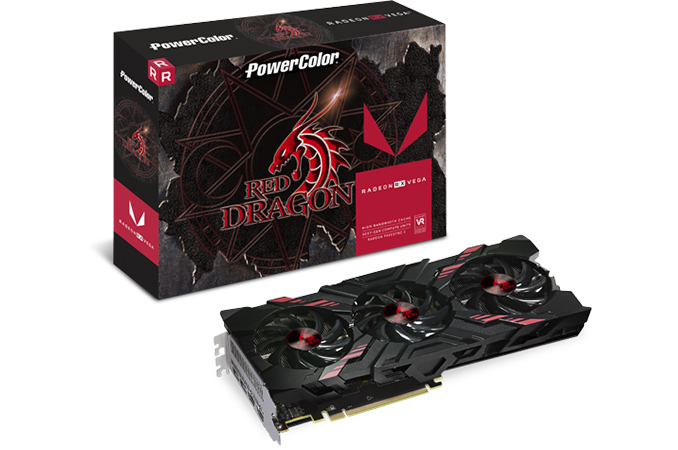
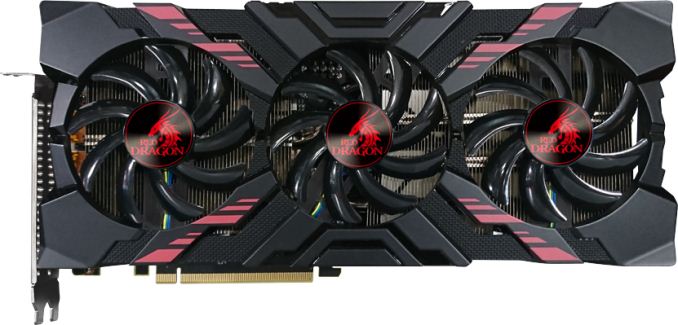
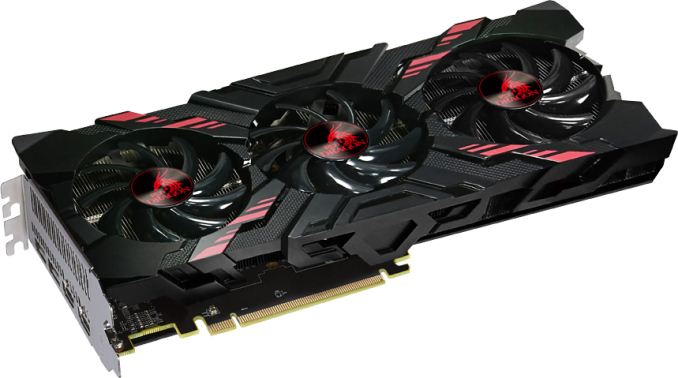
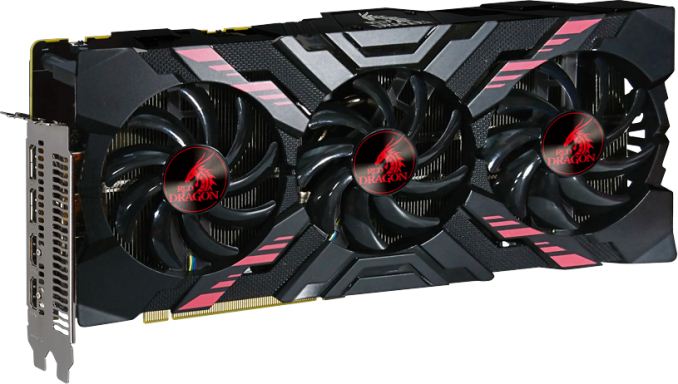

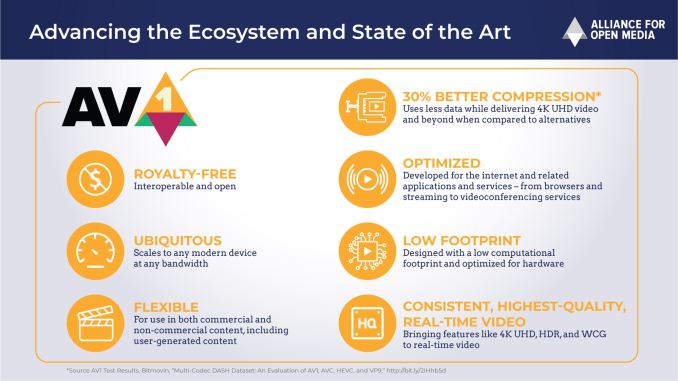
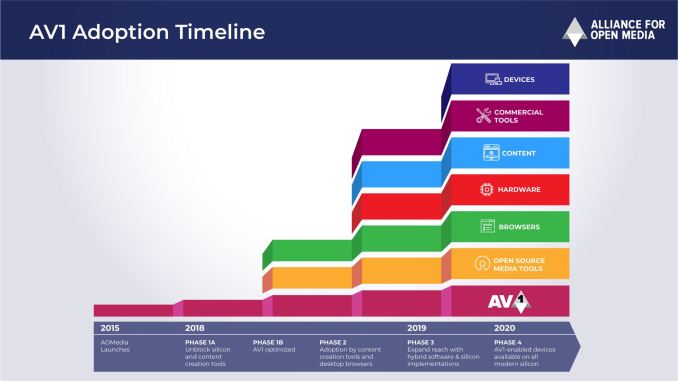
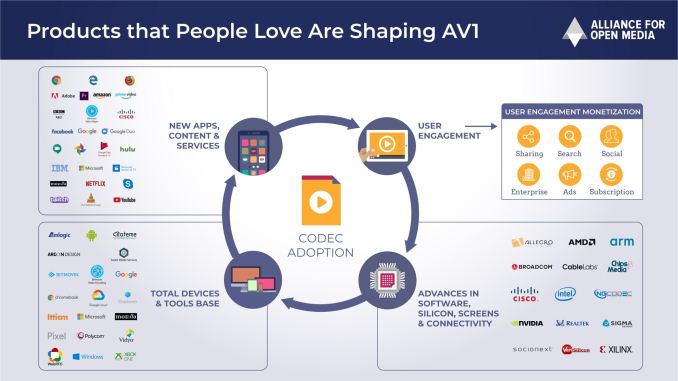
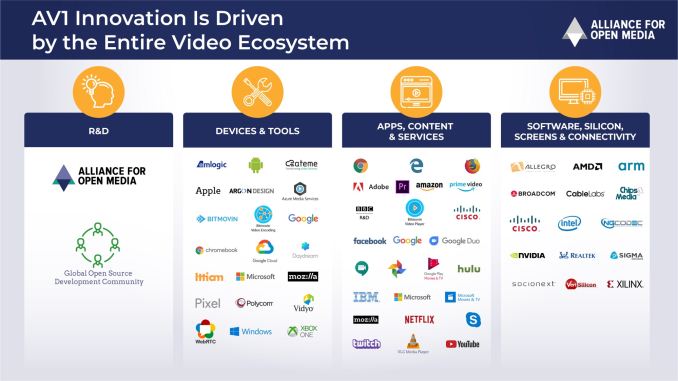
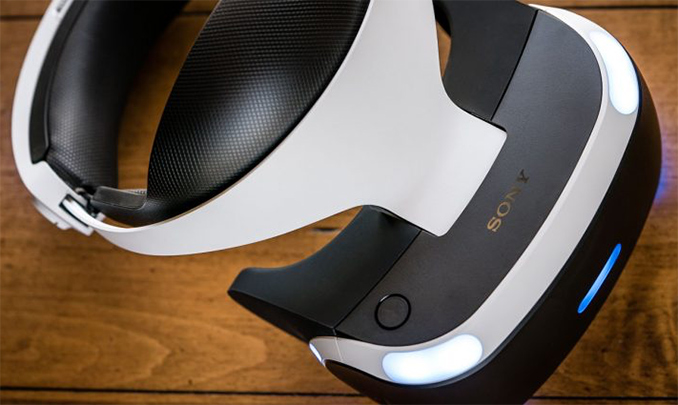
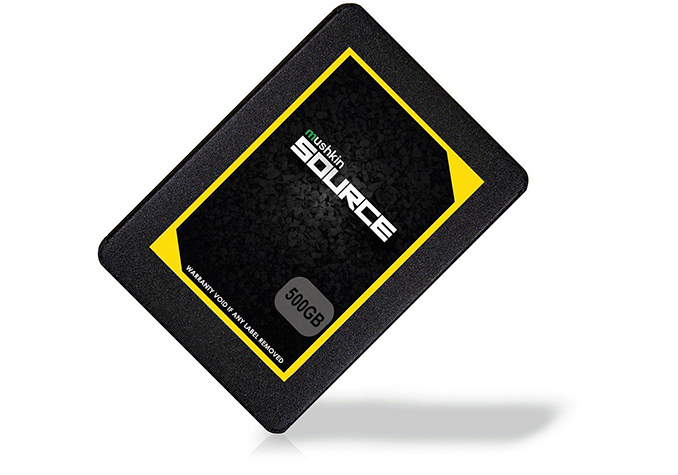
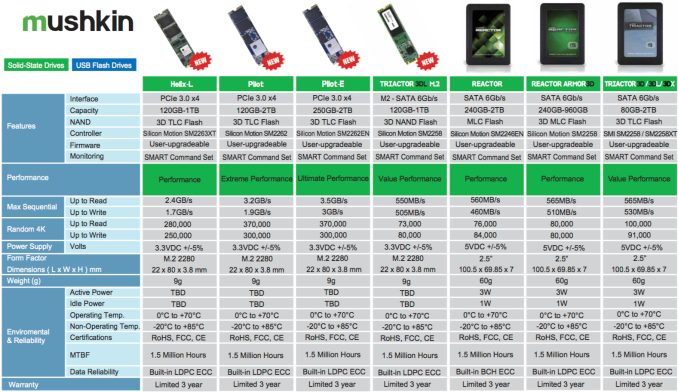
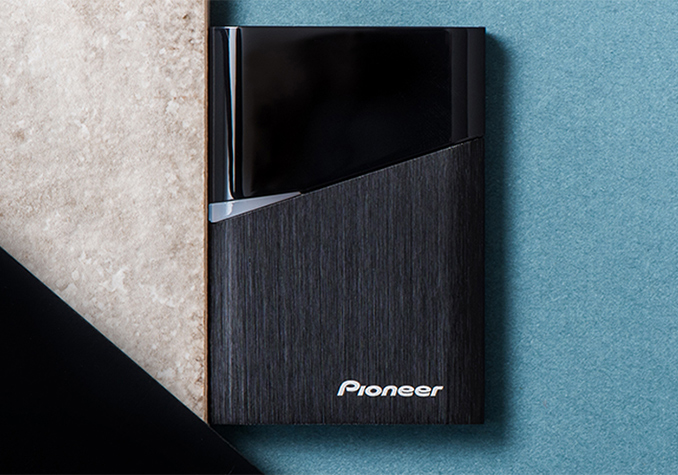

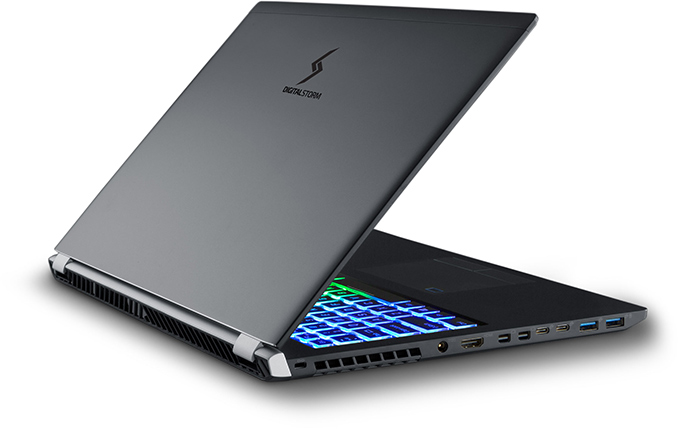
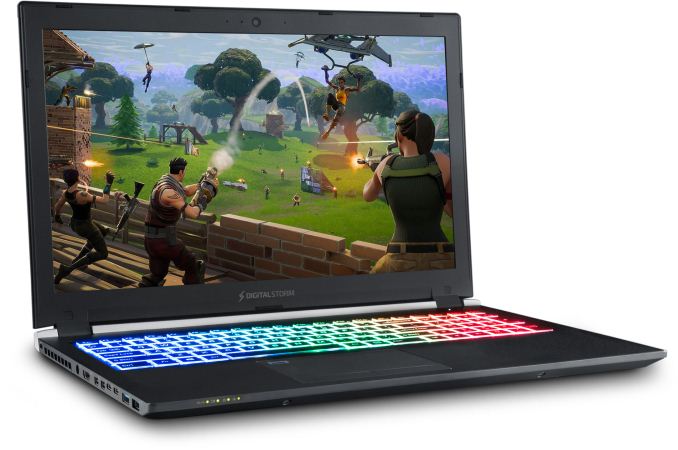
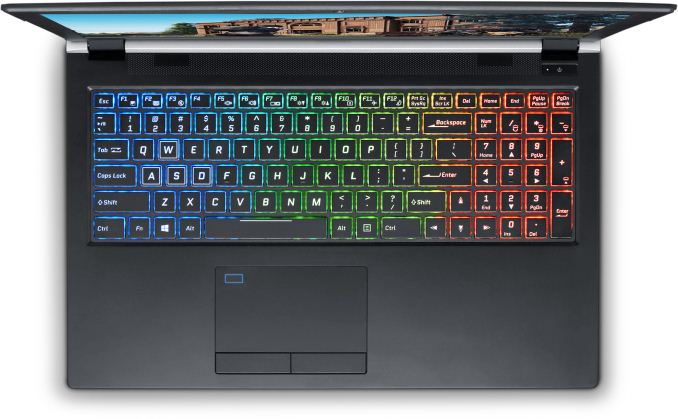
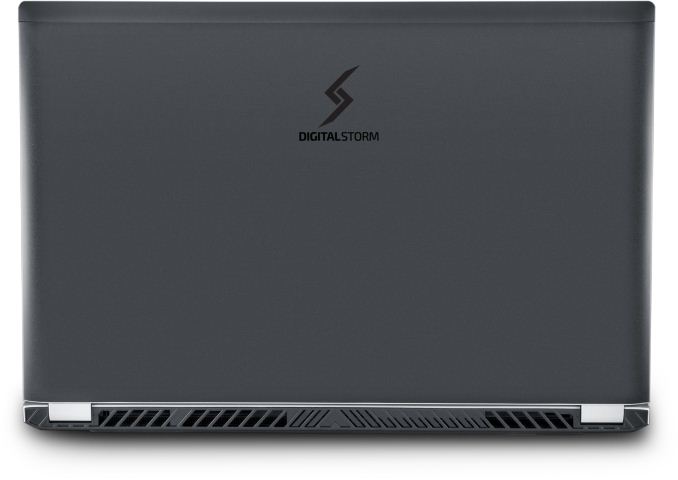
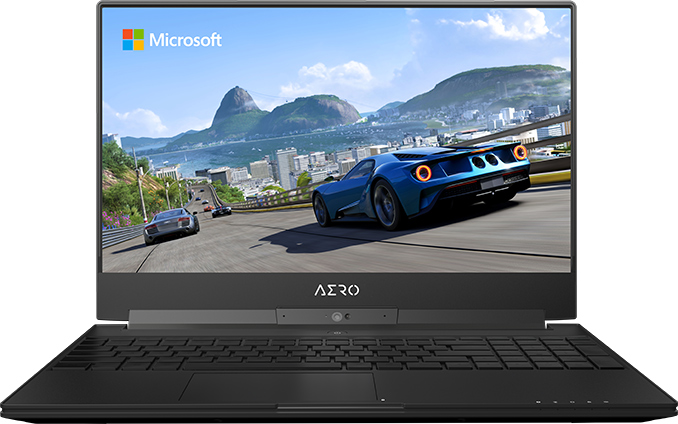
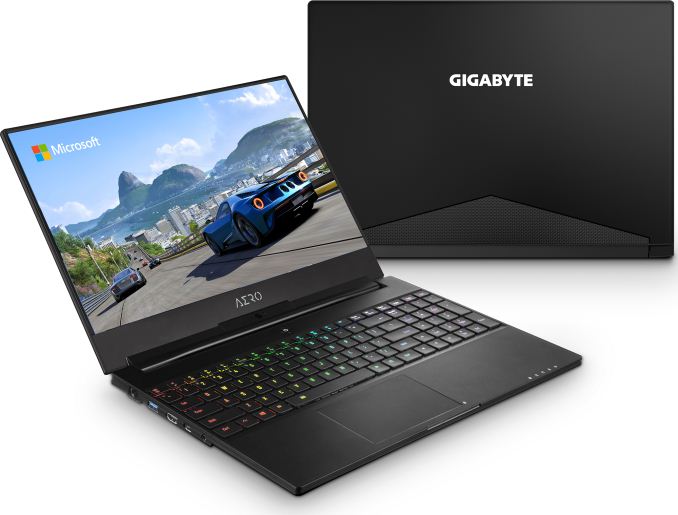
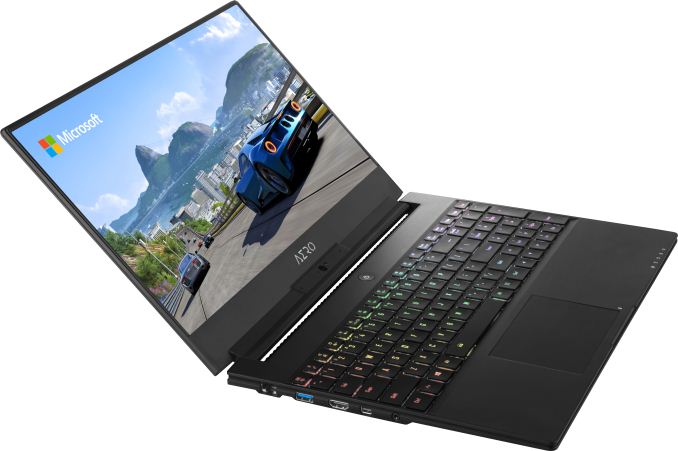
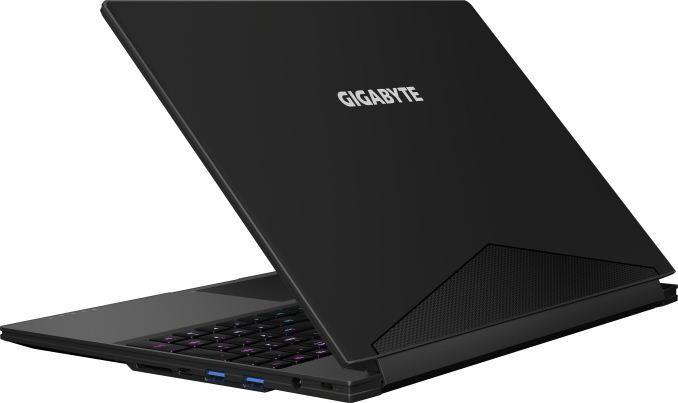
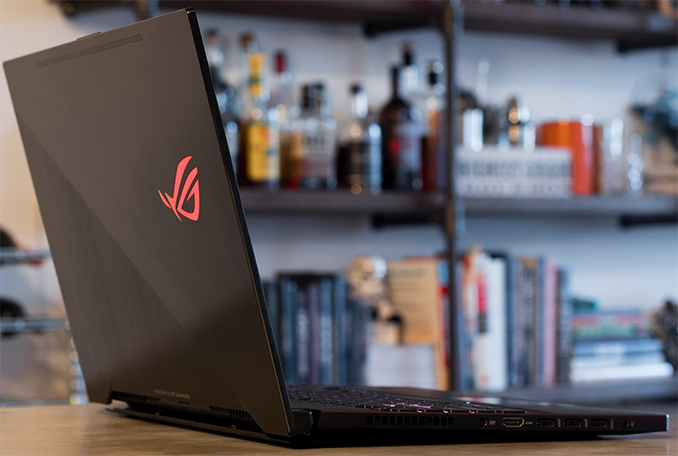
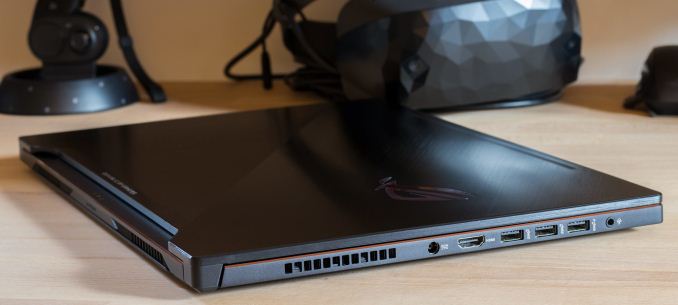
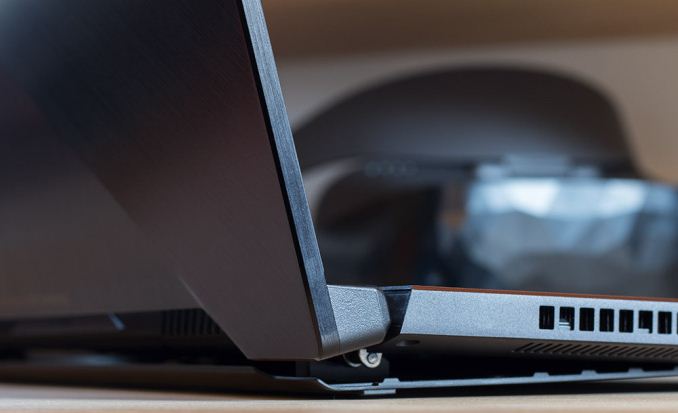
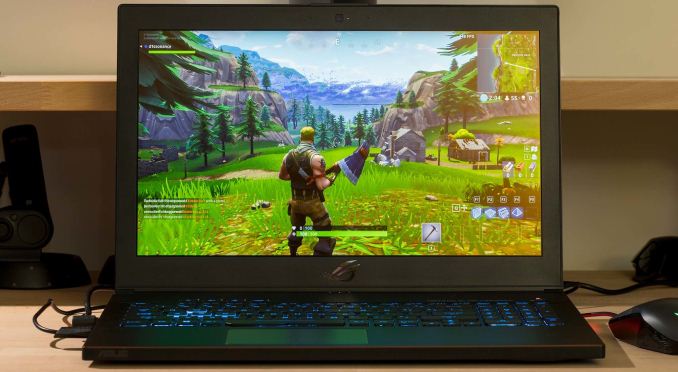
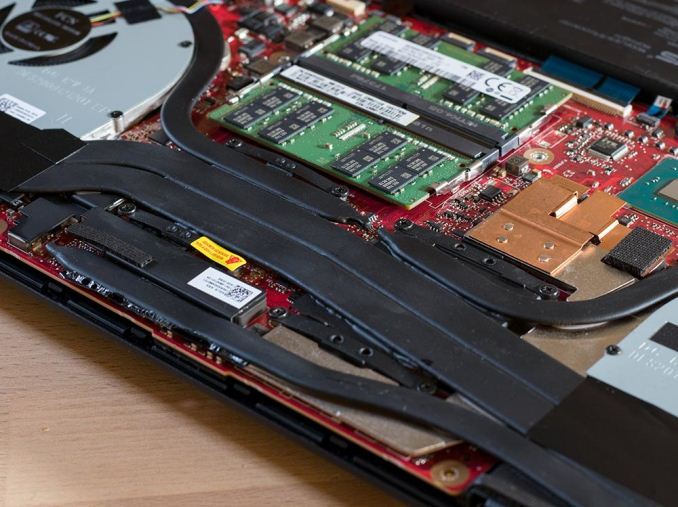

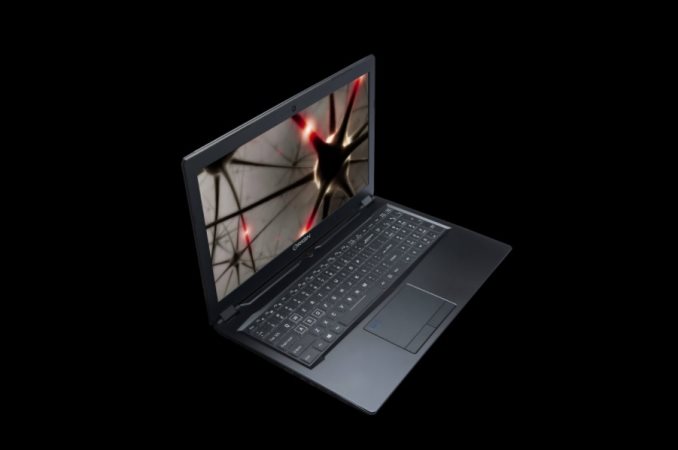
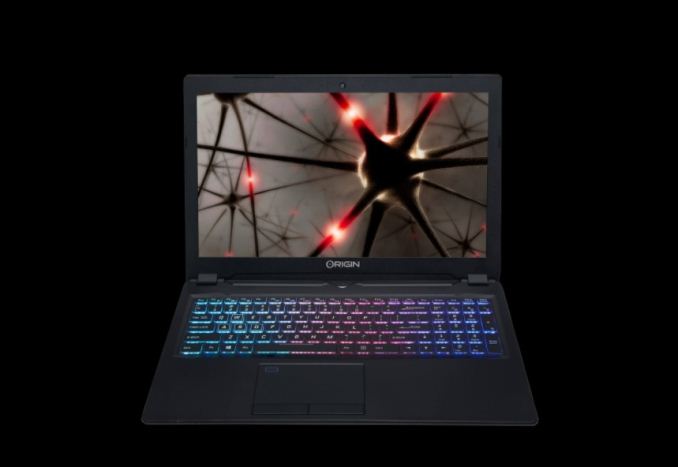
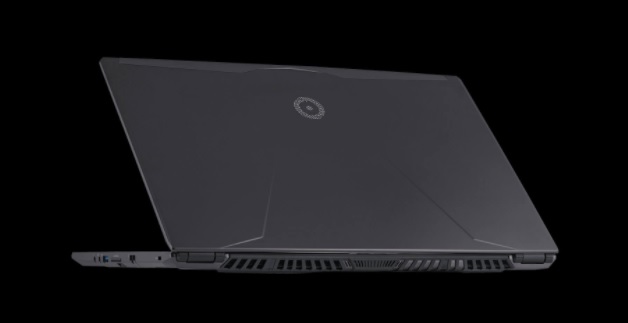
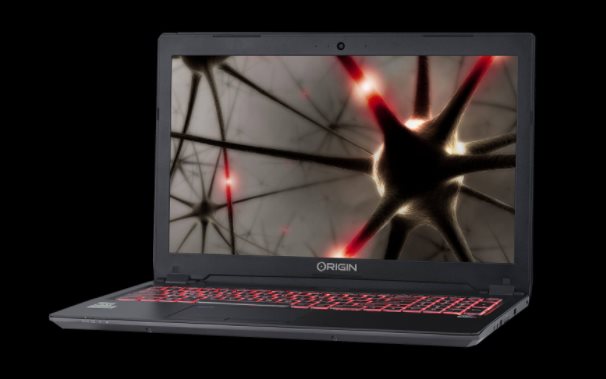
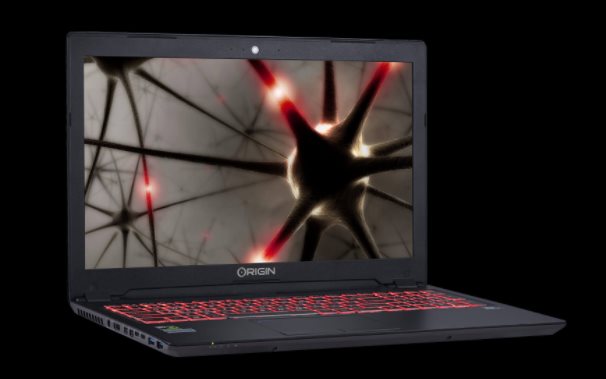


















Bookmarks